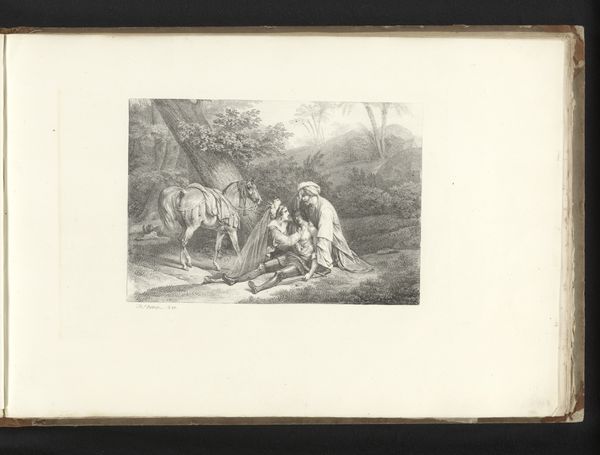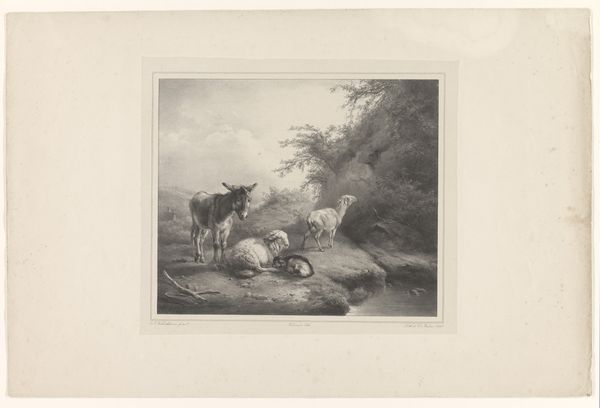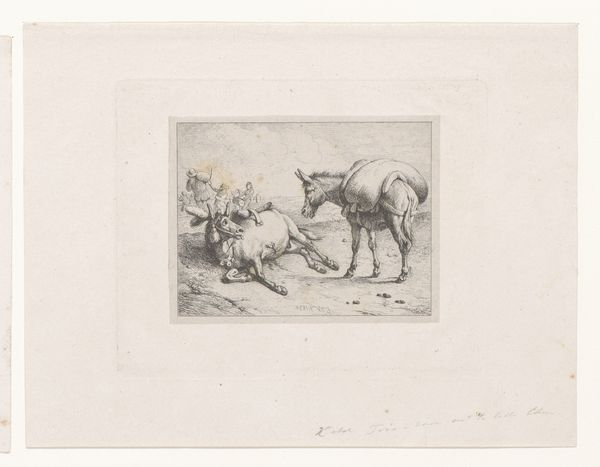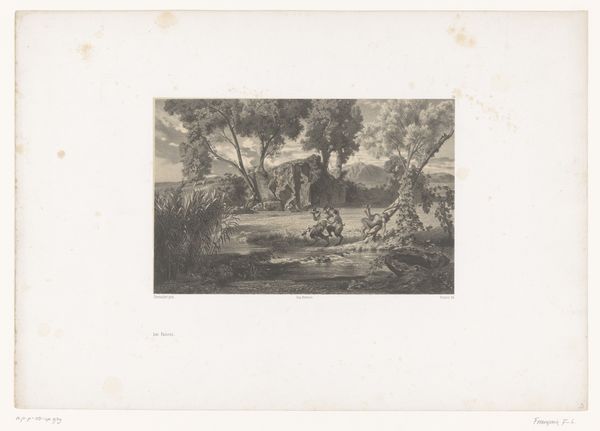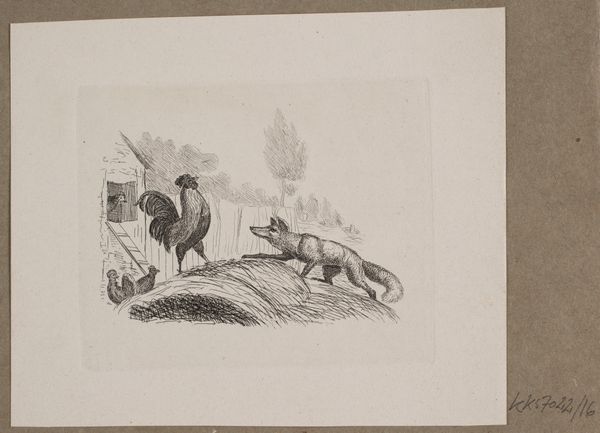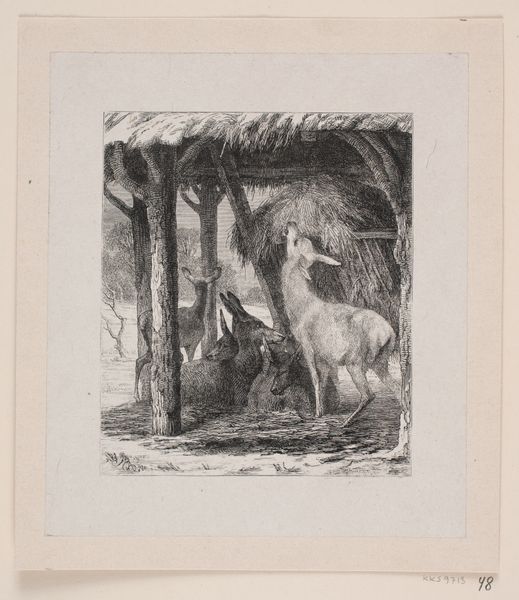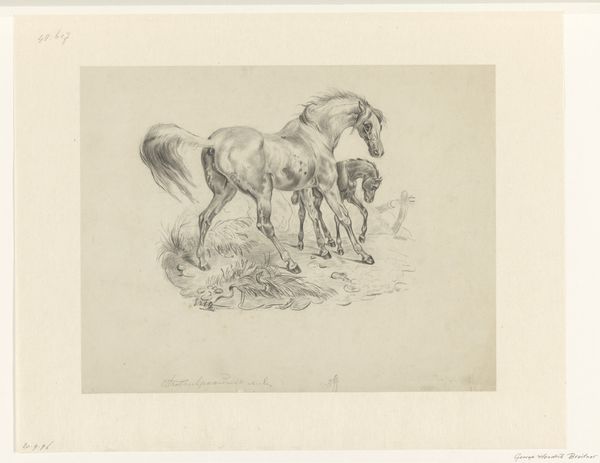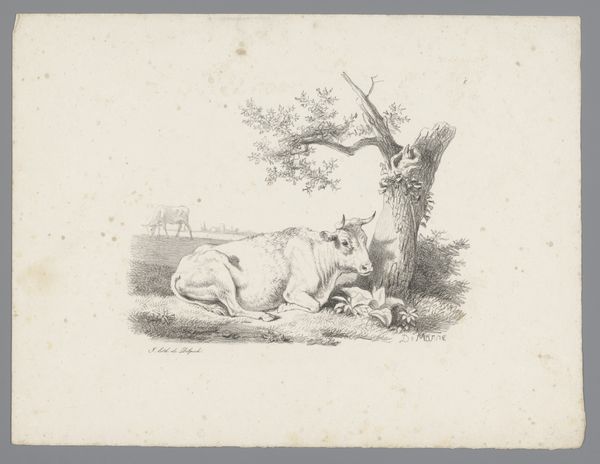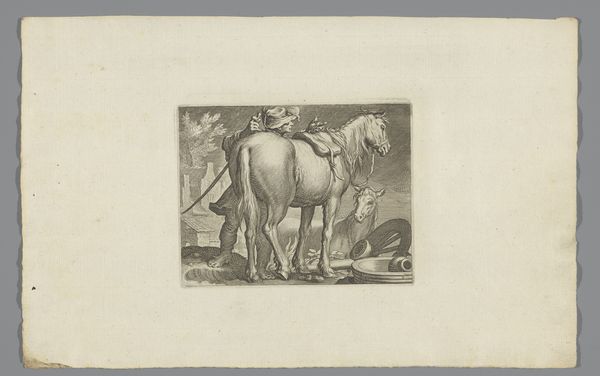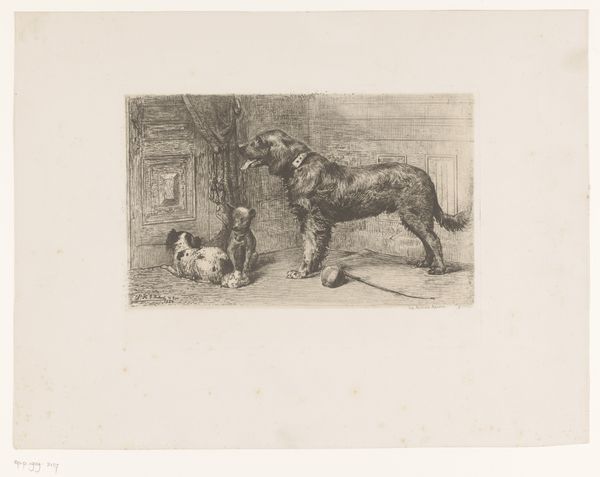
drawing, print, etching, engraving
#
drawing
# print
#
etching
#
landscape
#
figuration
#
history-painting
#
engraving
#
realism
Dimensions: height 280 mm, width 393 mm
Copyright: Rijks Museum: Open Domain
Hendrik Adriaan Christiaan Dekker produced this image of a bear caught in a trap using etching and possibly other printmaking techniques. What does it mean to depict a trapped animal in this way? I suggest that the answer lies in considering this image in its historical context. This image was made in the Netherlands in the nineteenth century, a period when debates around colonialism, industrialisation, and urbanization were intensifying. It was a time when Dutch citizens were reevaluating their relationship to nature. Thinkers and artists were increasingly portraying nature as something to be feared, and controlled, rather than revered. Images like this one tapped into anxieties about human vulnerability in the face of nature's power. They also functioned as justifications for human intervention in the natural world. To fully understand the meaning of works like this one, we can turn to printed sources from the period, such as newspapers, journals, and books. These resources provide invaluable insights into the social and intellectual context in which the artwork was created and consumed.
Comments
No comments
Be the first to comment and join the conversation on the ultimate creative platform.
